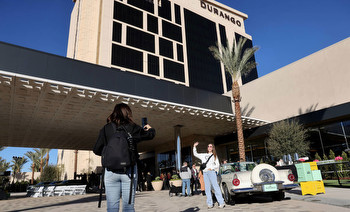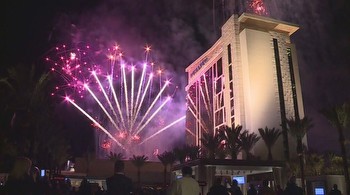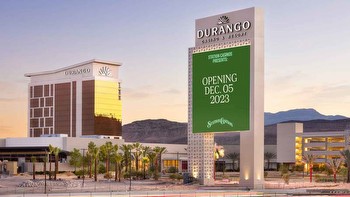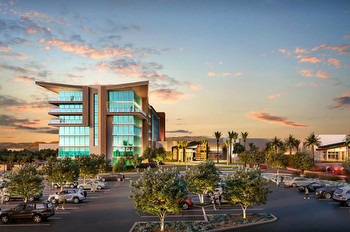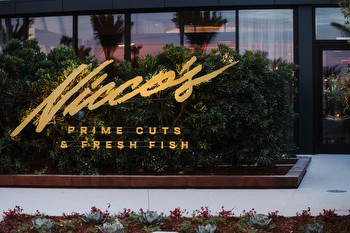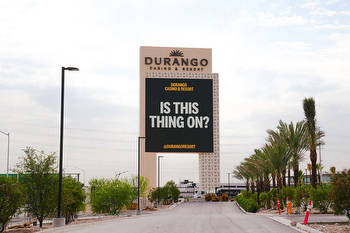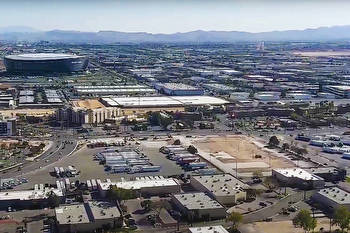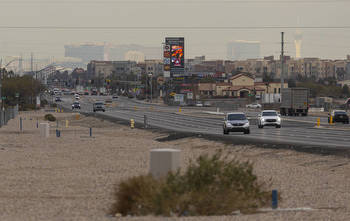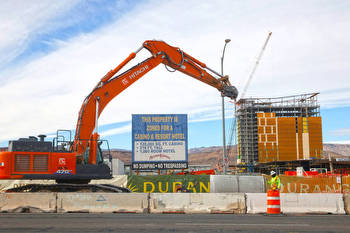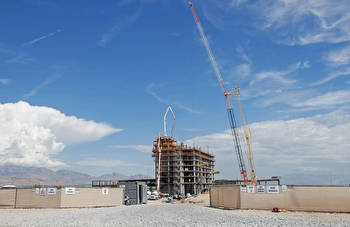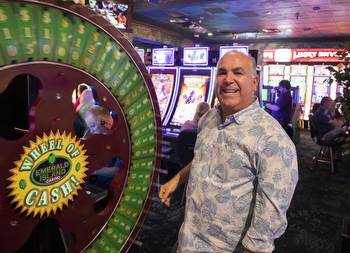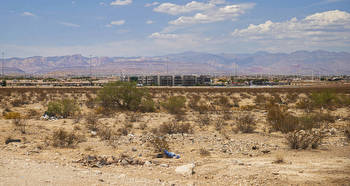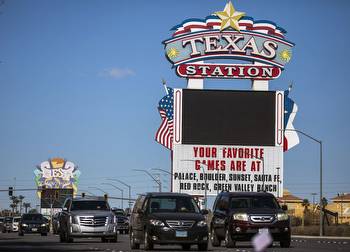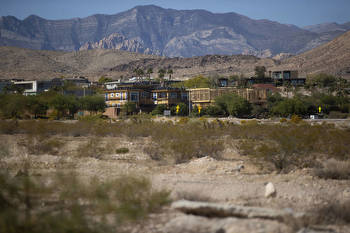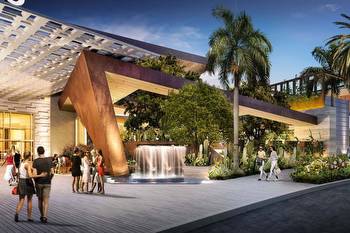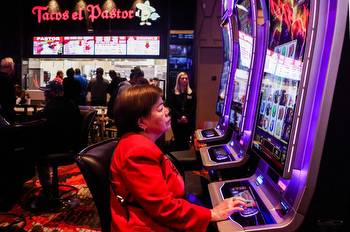Durango casino heralds a new Red Rock Resorts growth spurt
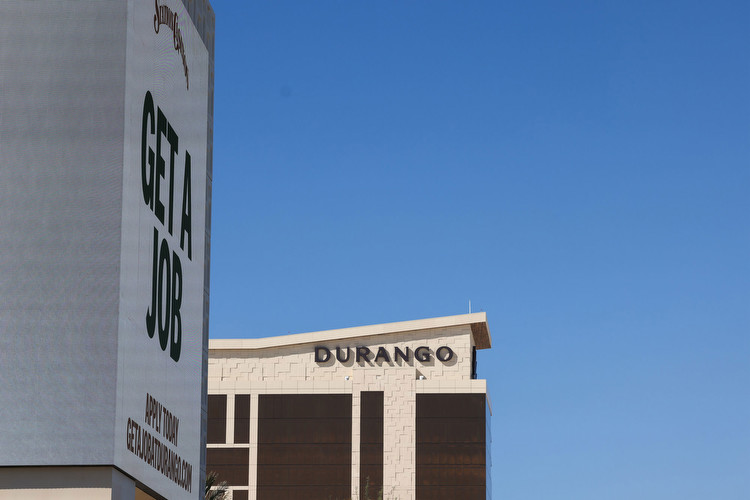
The company has six potential casino parcels totaling 500 acres throughout the valley.
Tuesday morning’s opening of the $780 million Durango Casino Resort comes 15 years after the company opened its last development.
Red Rock Resorts President Scott Kreeger said a dry spell like that won’t be repeated. The company already has a few locations in mind for expansion.
He said Durango’s opening is the blueprint for Red Rock’s development plans — building resorts in areas around the Las Vegas Valley where the population is growing, the economy is expanding and the company is not represented in the gaming landscape.
Red Rock owns six development sites that, combined, cover more than 500 acres in regions stretching to the outer ends of Clark County, giving the company a roadmap for future projects. In 2021, Red Rock CEO Frank Fertitta III and vice chairman Lorenzo Fertitta — the brothers are the casino operator’s largest shareholders — told analysts the goal was to double the company’s size by 2030.
“We’ve always been a company that is willing to buy future development land and hold it in a land bank for the right time,” Kreeger said in an interview last week. “Looking at the dynamic growth of Las Vegas, we think the growth capacity over the next 10 years is going to fuel and kickstart our ability to develop these sites.”
Kreeger said the main attraction is that most of the locations are off of “major arterial freeways” or within communities where residential and commercial development is actively expanding.
Two such locations are a 48-acre plot within Skye Canyon in the far northwest end of the valley along U.S. Highway 95, just south of the road leading to Kyle Canyon, and 49 acres in the west Henderson community of Inspirada.
Last month, the Henderson Planning Commission approved plans for Inspirada Station. The property is similar in design to Durango, but a development date wasn’t provided.
“This is the beginning of a new chapter of expansion for Red Rock,” said casino industry adviser Brendan Bussmann, managing partner of Las Vegas-base B Global. “With Durango being the first of what looks like many more opportunities over the next decade, and strong land-banked assets, the company can significantly add to and have an impact on both the locals and visitors markets.”
Kreeger didn’t commit to the company’s next project but said a nearly 125-acre site on Cactus Avenue and Las Vegas Boulevard is a few years down the road. The location would allow Red Rock to attract local customers and draw visitors off Interstate 15, which borders the west side of the property.
“We love the hybrid nature of being on I-15 and Las Vegas Boulevard, but at the same time having local cross streets like Cactus, which is becoming a major east-west thoroughfare,” Kreeger said. “The residential growth out there is super dynamic.”
An underserved market
Durango, which originally had a 71-acre footprint, was acquired during the development of the 215 Beltway in the early 2000s. The recession, along with Red Rock’s 2009 bankruptcy reorganization, put plans for the property on the shelf.
After development started in 2021, Red Rock sold a 23-acre parcel behind the casino for $23 million to a developer who plans to build apartment-type housing, “which will be good for the property,” Lorenzo Fertitta said at the time.
Kreeger said Durango shares similarities with Red Rock Resort, the company’s flagship hotel-casino in Summerlin. The new property is smaller with only 201 hotel rooms, four full-service restaurants and a 25,000-square-foot food hall with 10 outlets. Durango will have 20,000 square feet of convention and meeting space and a resort pool area.
The central feature is the 83,000-square-foot casino, which includes 2,300 slot machines, 63 table games and an STN-branded race and sportsbook, which has 205 seats, a circular bar and 4,200 square feet of LED television monitors. The George, a restaurant created by Las Vegas-based Fine Entertainment, is attached to the sportsbook and includes outdoor patio seating.
Durango will be the only major gaming location within a 5-mile radius available to more than 250,000 adults. The only other gaming offerings in the southwest area have been tavern-style restricted locations with no more than 15 slot machines.
“It’s in an underserved portion of the locals market that is growing significantly. The expansion is needed,” Bussmann said.
Durango will be the first new resort-casino dedicated to the locals market since M Resort opened in Henderson in 2009.
Durango is Red Rock’s first new locals casino since 2008, when the company, then named Station Casinos, opened Aliante in North Las Vegas. The company lost the property to creditors in the bankruptcy and the casino is now owned and operated by Boyd Gaming.
Bussmann expects that with Red Rock drawing up plans for other locals properties, Boyd Gaming will have to answer. In addition to its downtown casino holdings and Aliante, Boyd operates five additional locals casinos throughout the valley.
“I have a hard time believing that Boyd Gaming takes a pass and lets it go unanswered,” Bussmann said. “With a growing community, there are opportunities for both. The key will be execution.”
Boyd Gaming spokesman David Strow declined to comment on Bussmann’s remarks. But in Boyd’s third-quarter earning conference call in October, CEO Keith Smith said the company has been upgrading its hotel rooms and restaurants at its Las Vegas properties.
“We've talked in the past about trying to invest in and leverage up strong existing businesses where we believe we can continue to grow them and get a good return on investment,” Smith said.
Next up?
Kreeger said Durango’s second phase is already under consideration and would add 300 hotel rooms and other amenities, such as additional restaurants, meeting space and a spa.
But the company will take its time — six months to a year — before pulling the trigger.
“There are a lot of businesses coming in along that corridor, which will help with the mid-week business,” Kreeger said. “We always want to hit the right mark when we do our planning and we always plan our resorts with master plan expansion capacity.
Kreeger said two of the company’s development sites remain in the “yet to be determined” phase.
A 58-acre parcel at the intersection of Flamingo Road and Town Center Drive in Summerlin near the 215 Beltway is designated for a hotel-casino, but is viewing distance from Red Rock Resort. It’s also only 6 miles from Durango.
“Because it's sandwiched in between Durango and Red Rock, we want to see how Durango does first before we contemplate it because that is an incredible piece of land,” Kreeger said.
He noted the site’s proximity to The Ridges and Summit, two high-end developments in Summerlin that place the location next to “probably the highest net worth surrounding area in the entire city.”
Similarly, the company’s 100 acres on Tropicana Avenue west of Interstate 15 remains on the market. In April, Red Rock thought it had sold 49 acres of the site to the Oakland Athletics for the team's proposed Las Vegas ballpark, only to have the “binding agreement” come undone a month later and the land put back up for sale.
Once considered the site for a Strip-style resort, the land could eventually be developed by the company as a casino project.
“It’s an incredibly unique 100 acre-site that is gaming entitled that's adjacent to the Strip,” Kreeger said. “But it's probably not at the top of our list.”








